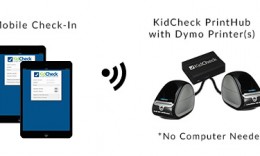Eight Components to a Volunteer Recruit Strategy

This is the second in a series of three posts on creating a volunteer recruiting strategy that shows your organization is committed to attracting, recruiting, and keeping volunteers. In the first post, we covered six reasons volunteer recruitment strategy is essential and worth investing time and resources.
Recruitment is the goal of your volunteer strategy. As you build a strong plan, you’ll want to ensure a few foundational elements are included. This is critical to the long-term success of your program and building a team that stands the test of time.
Here are eight components to include in your recruitment strategy to gain the best candidates for the right roles.
1. Goals – People volunteer for different reasons, but most likely, because of something they’ve heard or seen about your organization that resonates with them. That’s why having a clear and honest message about your goals and mission is important. People should be able to understand immediately what you are trying to accomplish for your community.
2. Recruitment Message – This refers to an act or message that is said or written encouraging people to take action. It should be short and sweet and include a sense of urgency. It will often take the form of an instruction or directive.
It should be easy to understand, informative, inviting, and convey why others want to join and support your organization. Write the message for different channels such as email, social media, bulletins, newsletters, and signage. Consider the following when crafting your recruitment message.
- Does the message reflect the goals of the broader organization, not just the children’s area?
- Have you highlighted the positive impacts people would make by volunteering with your ministry?
- Does the message call out specific requirements, skills, or knowledge that are needed?
- Who is the message best delivered from you, other volunteers, current families, or leadership?
- Does the message include your call to action? You’ve got people’s attention, which is an excellent time to capitalize on recruitment.
- Is it clear where people need to go to learn more, sign up, or share the information with others who might also be interested
3. The Volunteer Target– Provides more detail on who you are trying to recruit. It should call out how many short or long-term volunteers are needed annually, the skill sets required, and specific locations – think multi-site model. It helps determine where to do outreach and who should receive your recruitment message.
4, Communication – Effective communication is the cornerstone of fostering long-term relationships with volunteers. Consistent, clear, and concise communication increases trust, promotes engagement, helps solve issues quickly, and creates a positive perception within the ranks. Take the time to invest in outlining how you intend to keep volunteers up to date with new and existing information. This can be done with email, text, social media, newsletters, or notifications. Be creative.
5. Screening – This is a non-negotiable foundational element and key to an organization’s success. It uncovers an applicant’s character, commitment, work history with kids & youth, and willingness to comply with policies and procedures. It prevents bad behavior, protects your organization, and eliminates easy access to kids.
Click here to learn more about the seven elements of comprehensive screening.
6. Training & Education – These are directly correlated to long-term success and volunteer longevity and should always be a part of recruitment and onboarding. Benefits of training include helping new recruits become more informed and educated about your organization, the specifics of their role, and child safety policies and procedures.
Training is best done in smaller time frames, either in person or online. Incorporating information sharing into weekly, monthly, or quarterly meetings and get-togethers helps ensure people are always learning something new and staying up to date.
7. Rewards & Incentives – A positive way to engage, retain, and increase your volunteers is through recognizing and rewarding their contributions and achievements. In your plan, include ways recognition can drive a good volunteer experience and organically increase recruitment via your volunteers. Here are some ideas:
- A personalized thank you card, note, or certificate.
- Recognize volunteer anniversaries and birthdays.
- Call out longevity for several events (VBS), Sundays, or shifts completed.
- Gift cards, prizes, or memorabilia for volunteer milestones.
8. Performance Evaluation – Lastly, include what success looks like and how you will measure it. Highlight key performance metrics such as the number of newly recruited volunteers, length of service for long-term or returning volunteers, and their level of satisfaction. Determine when, where and in what form it will be best to keep leadership in the loop.
Check back soon as we share some tactics and new places to consider recruiting additional volunteers.
Join us for a free product demo and learn more about the benefits of using secure children’s check-in to manage your kid’s area efficiently. Subscribe to the KidCheck Blog or join us on YouTube, Twitter, Facebook, Pinterest, and Instagram.
Photo by ray sangga kusuma on Unsplash


